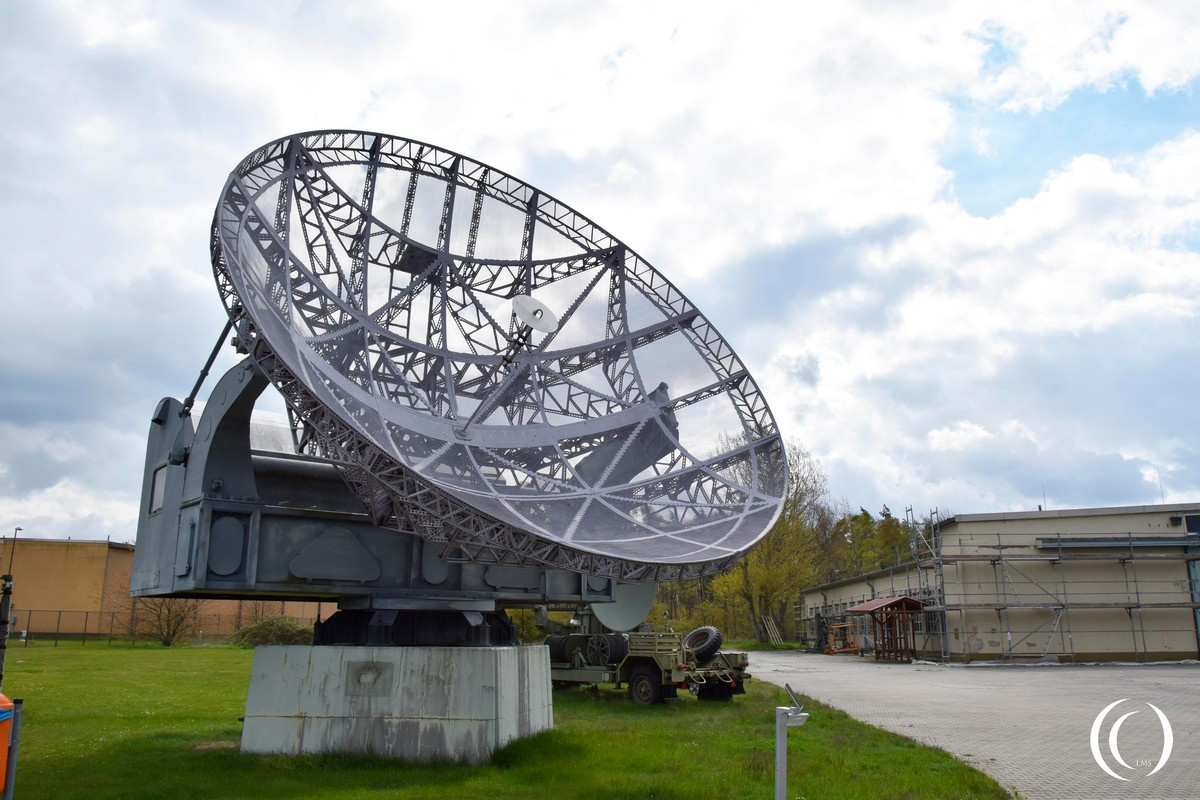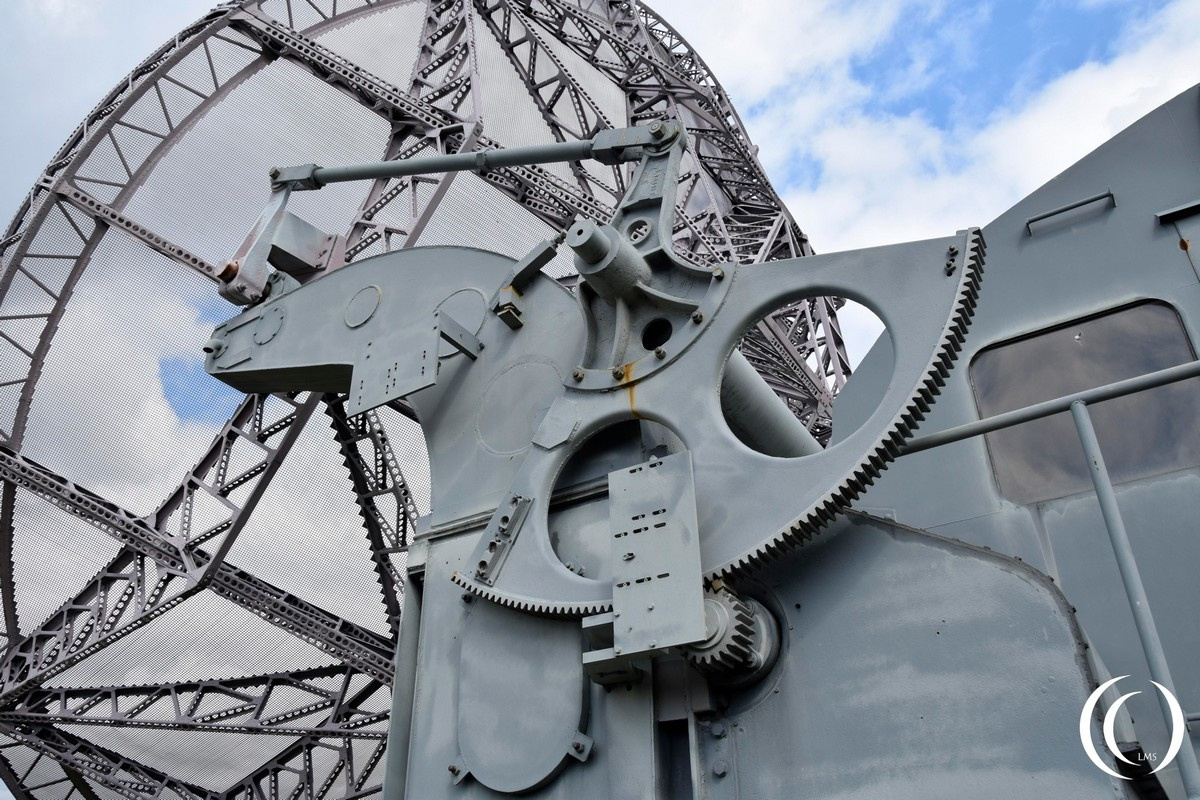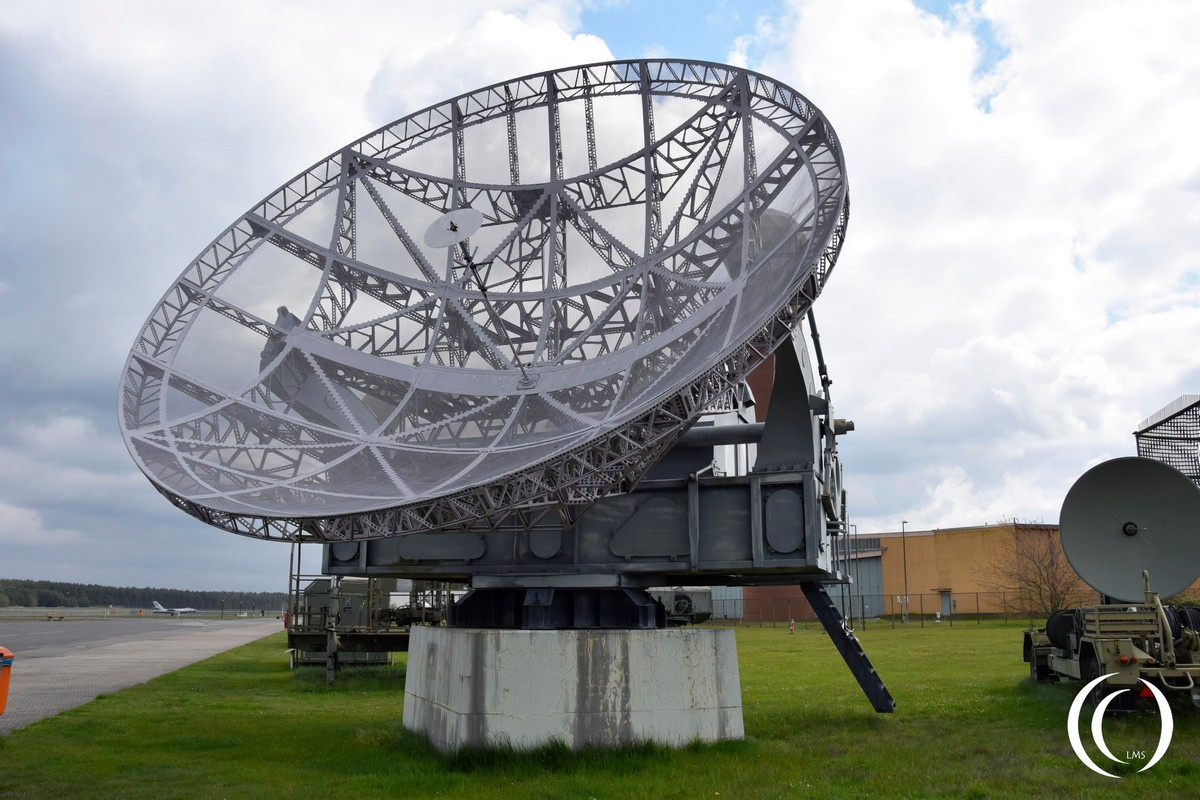
The Würzburg Riese FuMg 65 is a gun laying Radar with designation Flakortungsgerät FuMG 65. A gun laying radar helps to aim artillery or anti-aircraft guns with direct or indirect fire. The Würzburg Riese was used primarily for air defense or coastal defense for it had a fixed location. The radar disk was 7,5 meters in diameter and the radar weighted 15.000 kilograms. With a range of 70 kilometers, the Würzburg Riese was also used to direct fighters in their directions, particularly night fighters, close enough to enemy bombers for interception. Its smaller cousin was foldable and transportable and was used for artillery and anti-aircraft fire. Both had a secondary function as to warn civilians and military for incoming enemy attacks.
This Würzburg Riese FuMg 65 is photographed at the Militärhistorisches Museum Flugplatz Berlin-Gatow in Germany in 2016.



The Würzburg radars were one of the primary German radar systems. Therefore the British made a considerable effort to counter it. They developed systems like Windows and white noise radar jammers. The originally British Windows or American named Chaff was a cloud of aluminum strips or metalized glass fiber or plastic released by Allied planes of ships to interfere witj radar sights.


This is an original Würzburg Riese display on the Windows countermeasure. The smooth circle on the right is a normal radar feedback, the blip on 3 o’clock is a airplane spotted by the Würzburg Riese. The distortion on the left is the effect of Windows. If the airplane flew within the Windows strips it would be hidden from radar detection.


After the Second World War the Würzburg Riese was used in astronomical research. Dutch scientists brought some of the coastal radar systems to the Netherlands and placed them in the Kootwijk radio station, a former Radio broadcasting station used by the German Kriegsmarine to contact the U-boats in the Atlantic Ocean during the war. It was early radio astronomy to help discover the hydrogen line, help mapping the spiral arms of the Milky Way. In the UK it helped to observe sun spots.
